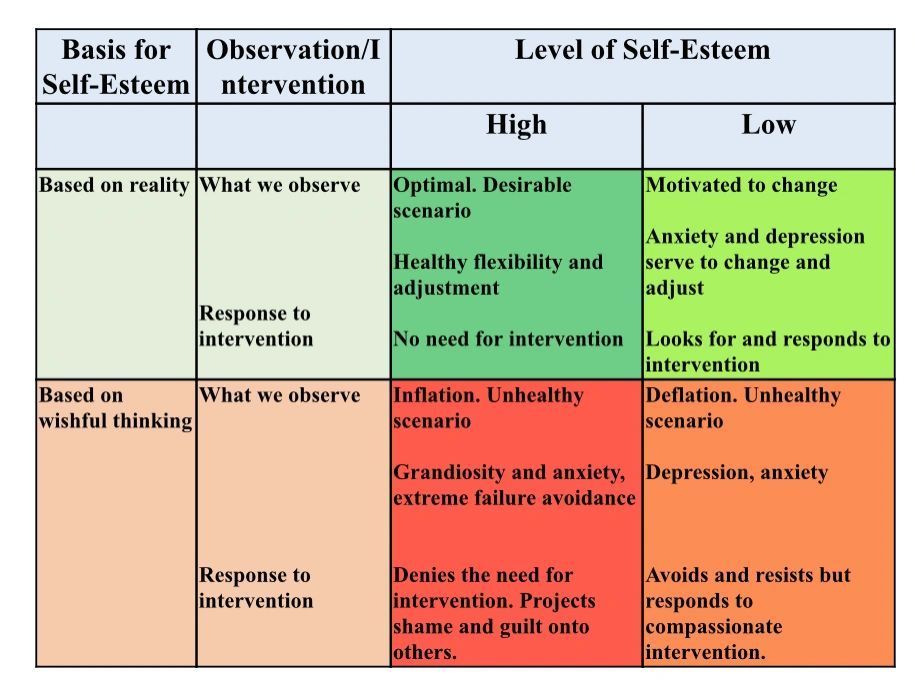Healthy Self-Esteem: How do we get there?

One of the most common causes for anxiety and depression is low self-esteem or self-worth. Let us define this very important quality in practical manageable terms. After all, the ABCs of mental health are about small steps we take daily to improve our sense of well-being. Our daily practices, habits and routines often become so automatic that we don’t even notice how they consistently contribute to our beliefs and feelings about ourselves.
Remember, that healthy self-esteem is always the one that is grounded in reality. Here is a simple table to understand why high self-esteem is not always great.
The most important sources of our self-esteems are:
1. Direct consequences of our own actions
It is VERY IMPORTANT to remember that COMPLETION or CLOSURE of an action is a REWARD. It is important to include simple actions into our daily routines that have clear starting and ending points.
Notice the rewards and punishments we experience as a result of our actions. The more rewarding consequences we experience, the more likely we feel good and think highly about ourselves. We are wired to adapt our behaviors to obtain positive consequences. As a result, we develop routines or patterns (behavioral and thinking) that we count on to lead us to positive consequences. We run into trouble when established routines stop delivering positive results and we don’t adjust.
2. Physiological states when we engage in activities and experience consequences
Physiological states are critical in how we interpret and integrate our experiences into our self-esteem. Feeling uneasy, feeling tense or feeling elated contributes in a very direct significant way. Overcoming uneasy anxious feeling in the stomach, successfully completing the action and experiencing the uneasy feeling transform into a warm relaxed sensation in the stomach makes a positive contribution to our self-esteem.
3. Observations and comparisons we make about other people who serve as a reference point for us
We can learn what works well by observing others. The better we are at identifying who we can use as models for learning from and modeling after, the more constructively we are improving our self-esteem.
4. Feedback from other people about us (our actions, character, thinking, etc.)
How and what others tell us about our personality, character, actions, and even attire impacts our self-esteem.
It is very important to use all four paths for self-esteem building and view self-esteem as a result of our daily actions.
Self-esteem is a not an inborn trait.
We develop and change it throughout our lives.



